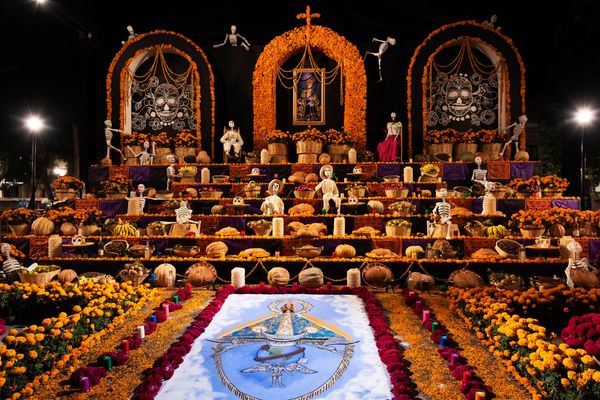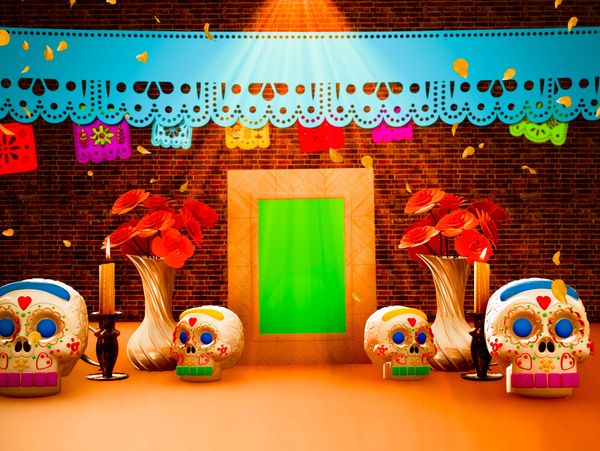Signed in as:
filler@godaddy.com
Signed in as:
filler@godaddy.com

Dia de los Muertos is a celebration of the dead that takes place in Mexico, over the span of three days. It begins on the eve of October 31st and goes on until November 3rd. This celebration originates from Aztec beliefs. They believed that when a person died, they would go Chicunamictlán- which is the land of the dead. From here, they would make the journey to Mictlán, and to get there, they would need to complete nine challenges. The living would set out food and tools to assist the dead in the afterlife.
This idea comes from the Aztec celebration of Mictēcacihuātl, the Queen of the Underworld. The Aztecs would hold an annual celebration in her honor. Every year, the Aztecs believed she would come to the land of the living, to ensure that the bodies of the dead were properly looked after. The modern Dia de los Muertos came from the blending of Indigenous and Catholic traditions. Catholics celebrate All Souls Day, which takes place on November 2nd.

USES

La Catrina is a popular skeleton figure that is seen everywhere on Dia de los Muertos. She was created by José Guadalupe Posada, a famous Mexican artist.
She was designed as a satire of Mexicans who were trying to dress like affluent Europeans. La Catrina was created to remind people that they must be themselves and not try to imitate others.

THE ORIGIN OF ALFOMBRAS
Alfombras were first introduced to Guatemala in 1524, in the city of Santiago de los Caballeros de Guatemala (now Antigua Guatemala). This tradition was brought by Spanish conquistadors to celebrate the feast of Corpus Christi, and it has since evolved into a key element of religious expression during Lent and Holy Week. Alfombras are carpets made from various plants and flowers, designed to honor the Passion of Christ by lining processional routes during religious processions.
.
Why do they use Alfombras?
Alfombras are not only decorative but also hold deep religious meaning. The act of creating these carpets reflects devotion, sacrifice, and humility, honoring the Passion of Christ. By walking over the alfombras during processions, participants reinforce the spiritual connection between their faith and the cultural tradition. These carpets, with their intricate designs and symbolic use of natural elements, serve as a form of visual prayer.

It celebrates the lives of innocent children from babies, toddlers, who briefly lived on earth. It has that name, since it’s "commonly believed that all children are innocent and ascend into heaven where they become angels".The atmosphere for Dia de Los Angelitos is cheerful and playful which is why you will see balloons on the altar instead of paper banners.

Celebrated on November 2 it celebrates, and honors all departed loved ones with joy. Both Día de Los Angelitos and Día de Los Muertos bring families together to remember and love those who are no longer with us.
We use cookies to analyze website traffic and optimize your website experience. By accepting our use of cookies, your data will be aggregated with all other user data.